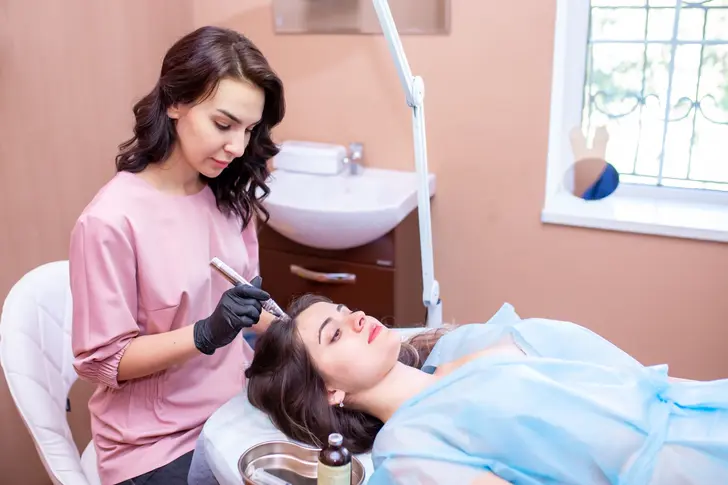Understanding Hair Loss in Women


How Common Is Hair Loss?
Hair loss can be distressing, but it's a common issue many women face. While it's normal to lose 50-100 hair strands daily, too much shedding or thinning can be concerning. Various factors contribute to hair loss, including genetics, hormonal changes, medical conditions, and lifestyle choices. Understanding the causes can help you take proper action and seek the right treatment.

Recognizing Female Pattern Hair Loss
Female pattern hair loss, or female androgenetic alopecia, is the most common type of hair loss in women. It typically begins with gradual thinning at the part line, followed by a rise in diffuse hair loss from the top of the head. Unlike men, women rarely experience a receding hairline. This type of hair loss is influenced by genetics and hormones, particularly androgens.

Hormonal Changes and Hair Loss
Hormonal fluctuations can significantly affect hair growth. Pregnancy, childbirth, and menopause are common times when women may experience hair loss. During pregnancy, high estrogen levels can cause hair to remain in the growing phase for longer. After childbirth, these levels drop, leading to a rise in shedding. Menopause can also lead to hair thinning due to hormonal changes.

Medical Conditions Affecting Hair Growth
Certain medical conditions can contribute to hair loss. Thyroid problems, such as hypothyroidism or hyperthyroidism, can disrupt hair growth cycles. Autoimmune diseases, such as alopecia areata, cause the immune system to attack hair follicles. Skin conditions affecting the scalp, including psoriasis and seborrheic dermatitis, may also lead to hair loss if left untreated.

Medications That May Cause Hair Loss
Some medications can have hair loss as a side effect. These include blood thinners, beta-blockers, and certain antidepressants. Cancer treatments, such as chemotherapy, are well-known for causing hair loss. If you suspect your medication is causing hair loss, consult your doctor. They may be able to adjust your dosage or suggest alternatives that don't affect your hair.

Nutritional Deficiencies and Hair Health
A balanced diet is crucial for healthy hair growth. Lack of iron, protein, and other nutrients can lead to hair loss. Crash diets or sudden weight loss can also shock the system, causing temporary hair shedding. Ensuring enough intake of vitamins and minerals, particularly iron, protein, and vitamin B, can help maintain hair health and promote growth.

Stress and Its Impact on Hair
High stress levels can lead to a type of hair loss called telogen effluvium. This condition pushes large numbers of hair follicles into a resting phase, causing a rise in shedding. A lot of emotional or physical stress, such as a death in the family or major surgery, can trigger this type of hair loss. Fortunately, this condition is often temporary, and hair typically regrows once stress levels normalize.

Hairstyling Habits and Hair Loss
Certain hairstyling practices can contribute to hair loss. Tight hairstyles, such as ponytails or braids, can cause traction alopecia, in which constant pulling damages hair follicles. Excessive use of heat styling tools or harsh chemical treatments can also weaken hair, leading to breakage and loss. Being gentle with your hair and avoiding damaging practices can help prevent unnecessary hair loss.

Treatment Options for Hair Loss
If you're experiencing significant hair loss, a health care professional may perform a physical exam, review your medical history, order blood tests, or even do a scalp biopsy. Treatments range from topical medications such as minoxidil to oral medications such as spironolactone. Many people benefit from lifestyle changes, including stress reduction and dietary improvements, while others turn to hair transplant surgery. All treatments work best when you start them early. If you notice hair loss, talk to your doctor as soon as you can.
PHOTO CREDITS:
Slide 1 - Vera Larina/Shutterstock
Slide 2 - gpointstudio/Shutterstock
Slide 3 - LightField Studios/Shutterstock
Slide 4 - Janeberry/Shutterstock
Slide 5 - SeventyFour/Shutterstock
Slide 6 - shurkin_son/Shutterstock
Slide 7 - Prostock-studio/Shutterstock
Slide 8 - Yaw Niel/Shutterstock
Slide 9 - Vera Larina/Shutterstock
SOURCES:
Nicole Rogers, MD, Old Metairie Dermatology, Metairie, LA; voluntary faculty, Tulane University.
Wendy Roberts, MD, dermatologist in private practice, Rancho Mirage, CA.
Dermatology and Therapy: "Dermatologic Care of Hair in Transgender Patients: A Systematic Review of Literature."
GLAAD: "Transgender FAQ."
National Center for Transgender Equality: "2015 U.S. Transgender Survey."
National Library of Medicine: "Androgenetic alopecia."
British Journal of Dermatology: "Hair loss among transgender and gender-nonbinary patients: a cross-sectional study."
Mayo Clinic: "Can Stress Cause Hair Loss?" "Hair Loss," "Hair Loss: Diagnosis," "Masculinizing Hormone Therapy," "Feminizing hormone therapy," "Trichotillomania (hair-pulling disorder)."
Cleveland Clinic: "Feminizing Hormone Therapy," "Masculinizing Hormone Therapy," "Thyroid Disease," "Hair Loss," "Hair Loss in Women," "Hair Follicle."
American Academy of Dermatology: "Hair Loss: Overview," "Thinning Hair and Hair Loss: Could it be Female Pattern Hair Loss?" "Hair Loss: Who Gets and Causes," "Do You Have Hair Loss or Hair Shedding?" "Polycystic Ovarian Syndrome In Patients With Hair Thinning," "Hairstyles That Pull Can Lead to Hair Loss," "10 Hair Care Habits That Can Damage Your Hair."
International Journal of Women's Dermatology: "Hormonal Therapy in Female Pattern Hair Loss."
Harvard Health Publishing: "Treating Female Pattern Hair Loss."
Johns Hopkins Medicine: "Hair Loss: It's Not Just a Men's Health Issue."
Mount Sinai: "Female Pattern Baldness."
Nebraska Medicine: "Hair loss in women: What causes it and how to stop it."
NYU Langone Medical Center: "Types of Hair Loss."